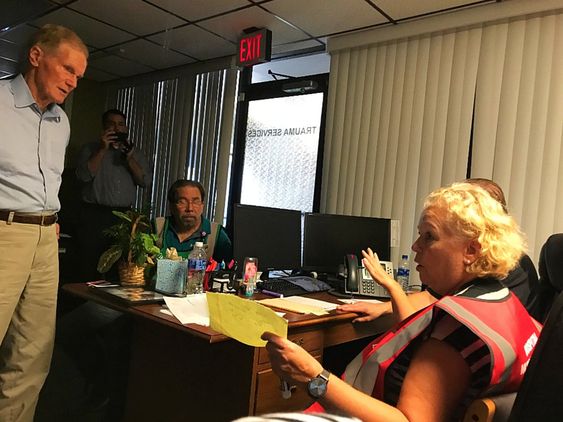Hurricane Michael forces hospitals to consider: Are you prepared for a surge emergency?


An Oct. 12 Tweet and image from the Bay Medical Sacred Heart Twitter account: “Sen. Bill Nelson visits Bay Medical Sacred Heart command center. The ER is open and continues to accept patients. The focus remains on safe evacuation of patients and first repairs on the hospital.”
As Florida hospitals and nursing homes struggle to recover from the onslaught of Hurricane Michael, medical facilities around the country should be asking themselves: Are you ready for a surge emergency?
Nick Gabriele, vice president of RPA /A Jensen Hughes Co., taught healthcare facility managers and real estate executives what they should consider when preparing for surge capacity and surge capability emergencies at the recent The NYC: 5th Annual Hospital, Outpatient Facilities & Medical Office Buildings Summit.
Here are some highlights from Gabriele’s presentation:
Assessment Tools that Better Prepare You for a Surge Emergency
- Surge emergencies are on the forefront of emergency planning right now.
- What is Medical Surge Capacity and Capability? Medical surge describes the ability to provide adequate medical evaluation and care during events that exceed the limits of the normal medical infrastructure of an affected community. It encompasses the ability of Healthcare Organizations to survive a hazard impact and maintain or rapidly recover operations that were compromised (a concept known as medical system resiliency).
- Surge capacity – manage a volume of patients.
- Surge capability – managing patients with unique issues – like Ebola.
- The are four categories of disasters that could cause significant illness and injury and for which the United States should be prepared: Relatively small-scale mass injury/illness events, Large-scale natural disasters, Complex mass casualty events, Catastrophic health events.
- You can have an external surge like a natural disaster or internal surge like a car through your ER waiting room
- Key Considerations Medical Surge Capacity: Space Issues, Continuity of Care, Infection Control & Prevention, Life Safety, Staff / Personnel Issues, Staff-to-Patient Ratios, Lean Healthcare, Staff Recall & Emergency Credential and Privileging, Supply “Stuff” Issues (including supply chain), 96-hour assessment, Medical Gas Support, Supplies, Food, Water, Linen, etc,
- Include considerations if some patients/residents, staff and volunteers stay behind to “shelter-in-place” (or if unable to evacuate), Stockpiling, Conservation Strategies, Status Reports & Monitoring, Sharing Resources.
- There are 1135 waivers that can allow you to go outside the rules but you must have the waivers!
- Don’t forget the transportation, look for support features, where to get equipment.
- There are companies with software and dashboards that can help you analyze and plan all of this.
The medical summit was sponsored by Corporate Realty, Design & Management Institute and the Health Care Institute of IFMA. Healthcare FMs, architects, designers and real estate executives attended 11 sessions that ranged from the current funding for medical center expansiosns to emergency surge planning to how to reduce ligature risks in your facility. The McMorrow Reports covered the conference.
